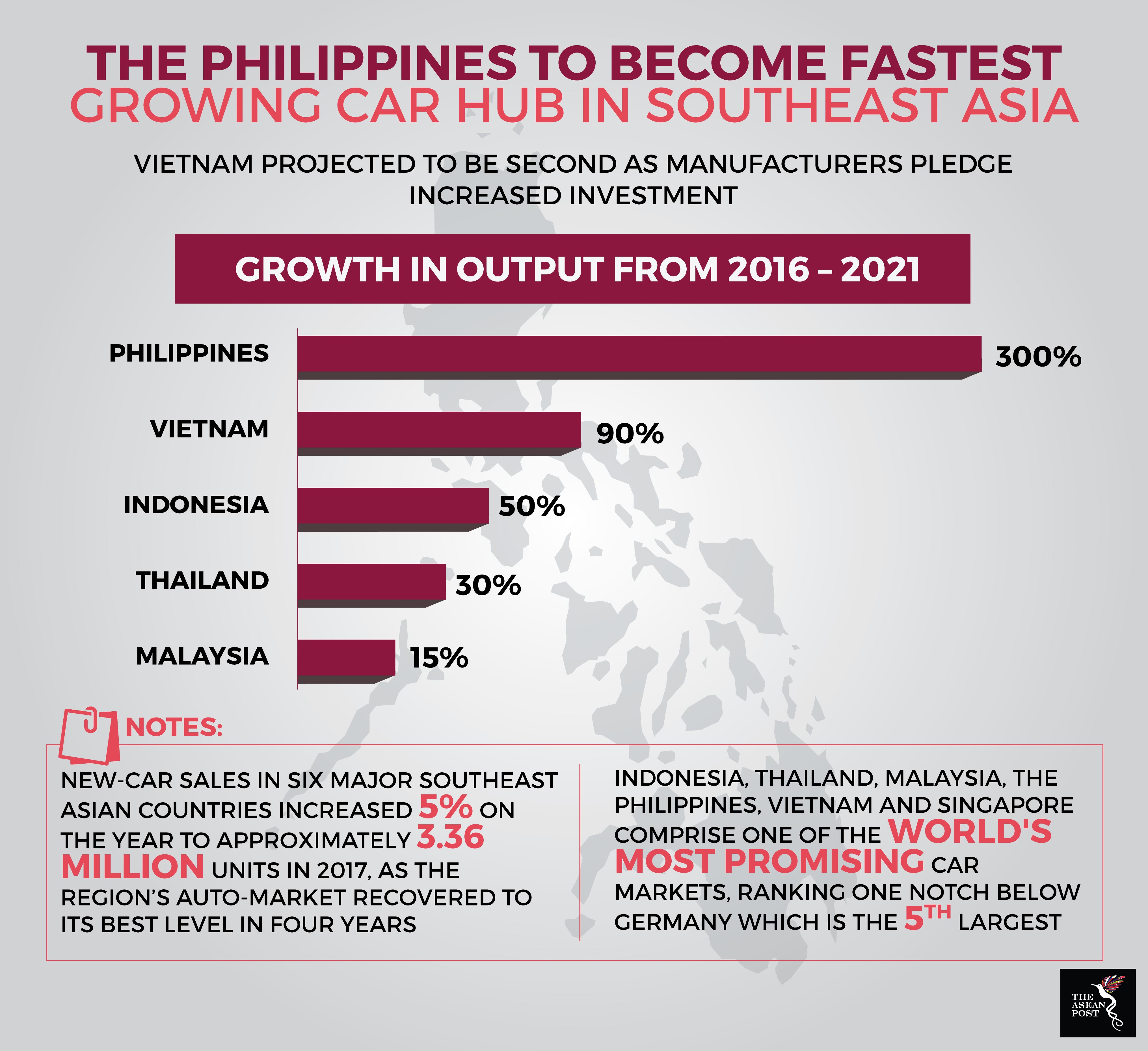With a relentless implementation of new technologies combined with a surge in investment deals, it is not erroneous to say that the automotive industry in Southeast Asia is experiencing a positive transition. Before the proposed introduction of Vietnam’s VinFast, Malaysia was the only Southeast Asian nation that had its own national car, in the form of Proton. Having said this, the automotive market of not only Vietnam, but the Philippines has seen tremendous growth and should be lauded by the ASEAN community.

Source: BMI Research
Automotive sector in the Philippines
According to a forecast by Frost & Sullivan, the number of new car sales in the Philippines (both commercial and passenger cars) will grow 11.5% to 576,959 units this year.
Over the next five years, the Philippine economy is expected to grow by 6-7% due to consumer expenditure and investment, with new car sales supported by strong economic improvement. The manufacturing industry in the country has expanded by over 7% since 2010. Participating in the automotive industry revitalisation initiative (Comprehensive Automotive Resurgence Strategy or CARS program), Toyota Motor Corporation and Mitsubishi Motors’ overseas subsidiaries will have a positive impact on local production capacity.
This automotive progress is facilitated by a pledge made by the Philippine government that will oversee a US$160 billion infrastructure upgrade in Manila. This initiative encompasses the building of roads that are of higher quality than before. President Rodrigo Duterte has also upped the ante by planning the construction of more highways that could offset traffic congestion in the capital. Such a move might potentially lead to an increase in car owners. It is also worth noting that 61 of the 75 important projects of the national infrastructure development plan or ‘Build Build Build’ relates to the automotive/transportation sector.
Automotive progress in Vietnam
With the car ownership rate in Vietnam at about 20 units per 1,000 people, the domestic automotive market has tremendous potential for further growth, with consumption-oriented, middle-income households being a catalyst for this shift. A report by Frost & Sullivan has highlighted that new car sales volume in 2018 is expected to grow to 256,000 units, up 6.8% from last year.
Furthermore, a steady elimination of tariffs for passenger cars through free trade agreements (FTA) will create positive ripples across the automotive pond, this year. Not only that, demand for commercial vehicles is expected to increase due to infrastructure development projects that are focused on road traffic.
According to Reuters, a point that could strengthen Vietnam’s current automotive success is the building of a car factory by Vingroup, the country’s leading property dealer in a project worth US$1-1.5 billion in the first phase. VinFast, Vingroup’s construction brand, is responsible for signing a Memorandum of Understanding (MoU) with Credit Suisse for the bank to extend US$800 million in financing the project.
However, there are potential challenges that might come to the fore, which could possibly hinder new car sales growth in Vietnam. The issuance of Decree 116, which was introduced in October of last year, has tightened controls for imported automobiles in terms of origin, types, technical safety, and environment protection requirements. As a consequence, automobile juggernauts like Toyota and Honda have announced a halt to exporting cars to Vietnam because they are unable to obtain a Vehicle Type Approval (VTA) certification issued by authorities in the exporting country.
This divisive clause may spell an end to small-scale auto importers in the country, as there will be minimal probability that international car manufacturers are agreeable to allowing an unofficial dealer to recall any of their products.
The expanding automotive sectors of both, the Philippines and Vietnam should be commended. The potential release of VinFast in Vietnam and Duterte’s proposed infrastructure plans in the Philippines could spur success for the automotive sectors of these two countries. The competition among automotive players in the region could possibly be the catalyst that propels ASEAN’s automotive industry to greater heights in the coming years.
